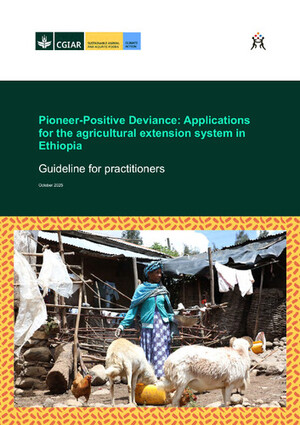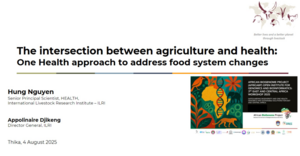
ILRI Forage Genebank supports development of improved forage varieties to increase livestock productivity in Ethiopia

Alieu Sartie in the seed storage cold room at the ILRI forage genebank (photo credit:ILRI/Apollo Habtamu)
The recent release of the CGIAR Genebank Platform 2019 annual report highlights that, for the third year in a row, germplasm distribution to requesters outside of the CGIAR exceeded that to those inside the CGIAR. Ethiopia ranked as one of the top 10 countries receiving germplasm from the CGIAR. Nearly 60% of these, representing a total of 1,091 samples, were forage samples from the International Livestock Research Institute’s (ILRI’s) Forage Genebank, in Addis Ababa, Ethiopia. This was particularly interesting because planted forages are not considered to be a significant part of animal feeding, contributing less than 1% of the total feed resources in Ethiopia. Between 2016 and 2018, a total of 10 of ILRI’s Genebank accessions, consisting of three forage grasses, four herbaceous legumes and three browse trees and shrubs, were released as new varieties in Ethiopia while prior to this only one genebank accession had been released as a new variety, in 1984.
ILRI’s Forage Genebank collection consists of nearly 20,000 forage accessions representing more than 1,000 different species, one of the most diverse collections of forages held in any genebank in the world. The primary objective of this collection is to conserve forage crop diversity and make it available for use across the global tropics. Accessions have been characterized for phenotypic variations, focused on nutritional traits and resistance to pests and diseases, to identify best bet accessions that offer better performance as part of sustainable farming systems and for additional evaluation and improvement.
Dawit Alemu, chairperson of the National Seed Advisory Group of the Ethiopian Ministry of Agriculture, says ‘the development of improved forage varieties will support improved production and productivity of livestock in the country. To assure this, newly-developed varieties are tested by breeders and evaluated for their superior performance over existing varieties by the National Variety Release Committee and other professionals.’ He added that only varieties that perform well during the evaluations are released and registered on the national crop variety register.
There has been a significant increase in the development and release of new forage varieties in Ethiopia recently, with a total of 25 new forage varieties released between 2016 and 2018 including the 10 accessions from the ILRI Genebank. The impact of these new varieties remains to be determined and will only be clear in a few years after monitoring their uptake by farmers.
Ethiopian forage expert Getnet Assefa says, ‘the development of new forage varieties underpins Ethiopia’s goal of increasing forage production to meet the needs of livestock producers, this is key for the future of the sector particularly as we face increased pressure from urban expansion into rural areas, the need to sustainably intensify livestock production and to adapt to the effects of climate variability and change.’
Chris Jones, leader of the Feed and Forage Development Program at ILRI said, ‘We conserve and characterize our genebank accessions for their use by livestock producers and it is great to see more of them being taken up for this purpose, this complements our other research activities in support of the production and distribution of high-quality forage seed to complement rangeland production and meet the growing needs of this sector.’
For more information and request for access to the ILRI Forage Genebank samples, contact the genebank manager
ILRI’s Genebank Overview



















